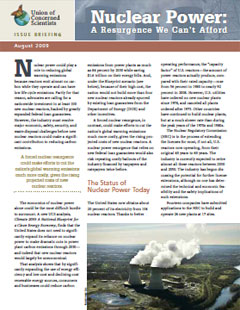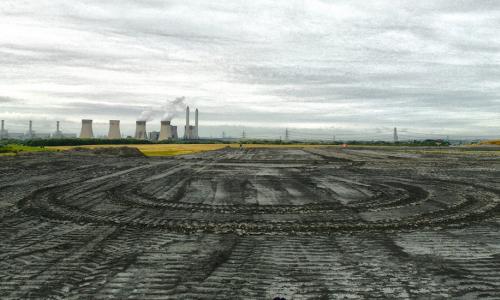Nuclear power could play a role in reducing global warming emissions because reactors emit almost no carbon while they operate and can have low life-cycle emissions. Partly for that reason, advocates are calling for a nationwide investment in at least 100 new nuclear reactors, backed by greatly expanded federal loan guarantees. However, the industry must resolve major economic, safety, security, and waste disposal challenges before new nuclear reactors could make a significant contribution to reducing carbon emissions.
The economics of nuclear power alone could be the most difficult hurdle to surmount. A new UCS analysis, Climate 2030: A National Blueprint for a Clean Energy Economy, finds that the United States does not need to significantly expand its reliance on nuclear power to make dramatic cuts in power plant carbon emissions through 2030—and indeed that new nuclear reactors would largely be uneconomical.
That analysis shows that by significantly expanding the use of energy efficiency and low-cost and declining-cost renewable energy sources, consumers and businesses could reduce carbon emissions from power plants as much as 84 percent by 2030 while saving $1.6 trillion on their energy bills. And, under the Blueprint scenario, because of their high cost, the nation would not build more than four new nuclear reactors already spurred by existing loan guarantees from the Department of Energy (DOE) and other incentives.
A forced nuclear resurgence, in contrast, could make efforts to cut the nation’s global warming emissions much more costly, given the rising projected costs of new nuclear reactors. A nuclear power resurgence that relies on new federal loan guarantees would also risk repeating costly bailouts of the industry financed by taxpayers and ratepayers twice before.




